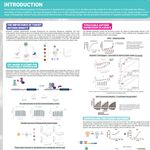Enhancer-Promoter Interactome Drives Neuronal Cell Differentiation and Contextualizes Alzheimer's Associated Polymorphisms
Chromatin Immunoprecipitation, coupled with sequencing, has shaped our understanding of how transcriptional machinery interacts with genomes to facilitate gene regulation. These protein-DNA interactions are fundamental components of primary-feature epigenetic signatures that are informative across development, gene regulation, and disease research. A challenge associated with these data is that they depict protein anchors in linear space and do not consider the complex and hierarchical genomic folding associated with DNA packaged in chromatin and further compacted into a nucleus. Here we combine chromatin immunoprecipitation with Hi-C in a single assay, known as HiChIP, to describe the interactome associated with protein anchors. By comparing the interactome of H3K27ac (enhancers), promoters (H3K4me3), and topological boundaries (CTCF) in iPSC and NSC, we can describe the different transcriptional landscape of the essential genes involved with pluripotency maintenance, NANOG and OCT4. We then investigate the enhancer interactome of NSC with regards to Alzheimer's polymorphisms identified through GWAS. We show four distinct enhancer regions associated with APOE, a highly implicated gene in Alzheimer's disease. These results posit that SNPs occurring at enhancer kilobases away from a gene promotor could impact gene regulation. These data introduce an additional dimension to ChIP-seq experiments to more completely describe the mechanism of gene activation and provide a more robust annotation of both protein anchors to their target gene as well as disease-associated polymorphisms.
Learning Objectives:
1. The role of genome conformation in gene regulation
2. Why topological interactions paint a more complete picture of gene regulation
3. How topology can be used in development, gene regulation, and disease studies
4. How to combine the 3-Dimensional data of Hi-C with ChIP-seq




